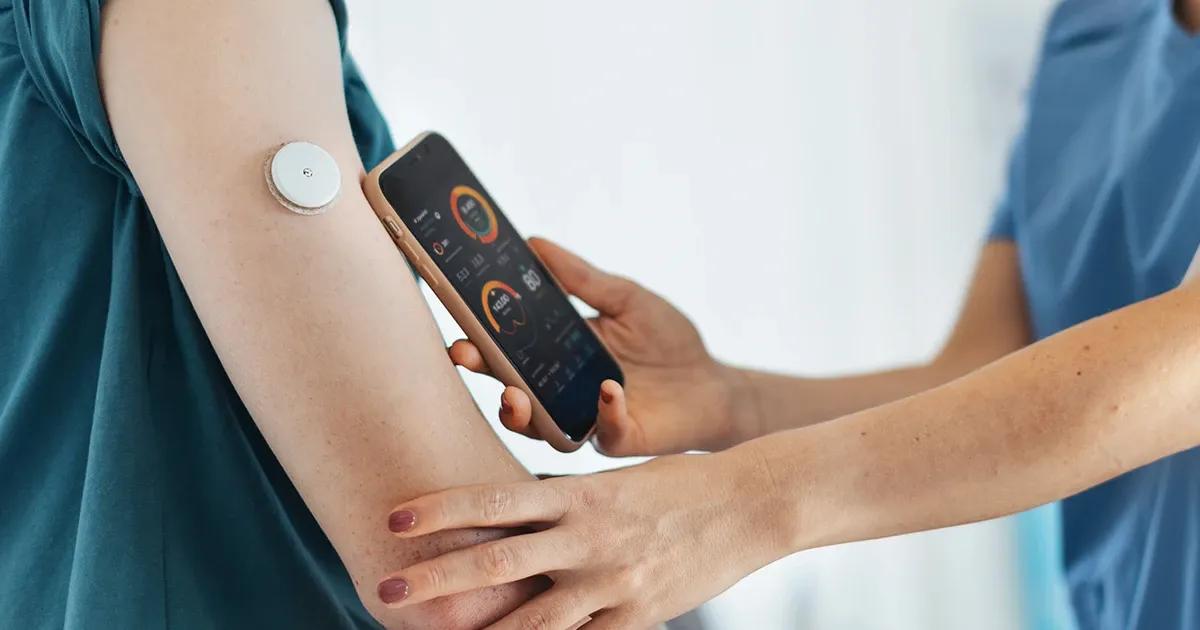Regardless of how innovative or feature-packed software is, its success ultimately hinges on one critical factor: usability. According to the latest statistics, up to 88% of consumers will not come back to your website due to bad UX, and 46.7% of them will complain to their friends about it. Ouch.
This is why usability testing is an integral part of software quality assurance. It ensures that your product is not only functional but also intuitive, user-friendly, and enjoyable to use.
In this blog post, we’ll explore the basics of usability testing, and why it is an essential component of software development and QA. We will also explore some common challenges you can encounter when performing usability testing, plus some examples, tools, and techniques to help you on your testing journey. Let’s dive in.
TL;DR
30-second summary
Usability testing is a non-functional testing method that measures how easy and effective users can use software. It’s to find design flaws and pain points by watching real users. It’s crucial to do this throughout the Software Development Life Cycle (SDLC) as it improves user experience, reduces development costs by fixing issues early and gives you a competitive advantage. The process involves setting goals, recruiting participants, testing and analyzing results. A focus on usability means better user adoption, higher retention and a more intuitive product.
- What is Usability Testing: Usability testing is a non-functional method that measures how easy and effective real users can use software to find design flaws and pain points.
- Why It’s Important: Usability testing improves user experience, reduces development costs, improves accessibility and gives you a competitive advantage by increasing user adoption and retention.
- Integrating into the SDLC: It should be a continuous process throughout every phase of the Software Development Life Cycle, from early stage prototypes to post release feedback.
- The Testing Process and Tools: The process involves setting goals, recruiting participants and testing, often with tools like UsabilityHub and techniques like A/B testing or user interviews.
What is usability testing?
Usability testing is a form of non-functional software testing for evaluating how easily and effectively users can interact with a piece of software. It centers on observing real users as they perform specific tasks within the product to uncover pain points, confusing elements, or design flaws that might hinder their experience. The overarching objective is to ensure the software aligns with user expectations, delivers a seamless experience, and ultimately enhances user satisfaction.
This process involves various approaches and methodologies, each tailored to suit specific project requirements or stages of development. Here's a breakdown of the key types of usability testing:
Moderated vs. unmoderated testing
Moderated testing is an approach where a facilitator actively engages with users during the testing process. The facilitator may guide participants, ask follow-up questions, or probe deeper into specific challenges users face. This method provides rich, qualitative insights and is particularly useful for exploring new concepts or diagnosing complex issues.
Unmoderated testing, on the other hand, is where users test the software independently, typically using pre-defined tasks delivered through an online platform. This method is more scalable and cost-effective, allowing for the collection of feedback from a larger, geographically dispersed group. It’s ideal for quickly gathering broad usability data.
Remote vs. in-person testing
Remote testing is conducted online and allows participants to test the product from their own environment. This approach reflects real-world usage conditions and offers the advantage of accessing a global pool of users. It can be either moderated or unmoderated, depending on the project’s needs.
In-person testing takes place in a controlled setting, such as a usability lab, where testers can closely observe users' behavior and body language. It provides a deeper understanding of user interactions but is typically more resource-intensive than remote testing.
Explorative, comparative, and quantitative testing
Explorative testing focuses on discovering users’ needs, expectations, and reactions to a product or concept. It is often used during the early stages of development to inform design decisions.
Comparative testing involves evaluating two or more design variations to determine which performs better in terms of usability. This is especially valuable when refining features or interfaces.
Quantitative testing emphasizes measuring specific usability metrics, such as task completion rates, time on task, or error frequency. The data collected provides objective benchmarks to assess and improve the product’s usability.
By combining these methods strategically, usability testing can uncover valuable insights that shape user-centric designs and ensure software meets the demands of its target audience. It’s an essential step in delivering intuitive, efficient, and enjoyable digital experiences.
Why is usability testing important in software development?
Usability testing is not just a “nice-to-have” step—it is a critical component of the software development process, influencing a product's overall success and longevity. There are several key reasons why usability testing is indispensable:
1. Enhances user experience
Usability testing allows developers to identify pain points, glitches, or confusing interfaces that might hinder users from completing tasks efficiently. It ensures that users can navigate the software with ease, understand its functionalities intuitively, and achieve their goals without frustration. When users can interact with a product seamlessly, their overall satisfaction with the product improves, leading to better adoption rates.
2. Reduces development costs
Catching usability issues early in the development cycle is far less expensive than making adjustments after a product has been released. If usability flaws are identified during later stages—such as post-launch or during customer feedback sessions—fixing them can lead to expensive redesigns, delays, or even the need for a product recall. By testing early and often, development teams can save time and resources, ultimately lowering the cost of the product lifecycle.
3. Improves accessibility
Usability testing goes beyond just creating a user-friendly interface for the general audience. It also ensures that products are accessible to diverse user groups, including those with permanent (or situational) disabilities like visual, auditory, motor, or cognitive impairments. Incorporating accessibility features such as keyboard navigation, screen reader compatibility, and color contrast improvements makes the product more inclusive, increasing its reach and meeting the needs of users regardless of their abilities.
4. Increases user retention and brand loyalty
A product that provides a smooth, intuitive experience is more likely to retain users. When users find value in using a product without encountering frustrating barriers, they are more likely to continue using it and invest in its features. This satisfaction fosters loyalty, creating a strong user base. Moreover, a positive user experience encourages word-of-mouth marketing, with users recommending the product to friends, family, or colleagues.
5. Boosts competitive advantage
In a crowded digital landscape, where users have many choices, usability can be the key differentiator. A product that stands out due to its simplicity, intuitive design, and positive user experience can quickly capture attention and attract more users. In a saturated market, this competitive edge can make a substantial difference, ultimately driving higher engagement, customer acquisition, and revenue growth.
Incorporating usability testing into the development process doesn’t just improve the product—it demonstrates a commitment to providing value and satisfaction to the end user. It helps create products that are not only functional but also enjoyable to use, which is crucial for long-term success in any software development project.

Usability testing in the SDLC
Usability testing is a crucial aspect that should be woven into every phase of the software development life cycle (SDLC) to ensure the creation of user-friendly products. Here's how it plays an essential role at each stage:
1. Early-stage testing
At the design stage, usability testing focuses on evaluating wireframes, mockups, and prototypes. These initial models allow designers to identify usability flaws, such as confusing layouts, difficult navigation, or unclear content before any actual coding begins. Conducting early tests with a small user group can reveal potential obstacles that users may face, enabling the team to make necessary adjustments and iterate on the design. This proactive approach minimizes costly changes in later stages and helps guide the design in a user-centered direction.
2. Development phase
As the development of the product progresses, usability testing should be an ongoing process. By conducting iterative usability tests during this phase, developers can catch usability issues as they emerge, ensuring that they are addressed promptly. This testing might involve usability testing on specific features, user flows, or interfaces, ensuring that user needs are being met effectively. Regular testing during this phase helps ensure that the product remains intuitive and user-friendly as it evolves, avoiding the risk of usability problems being overlooked until the final stages.
3. Pre-release testing
Before releasing the product to the public, pre-release usability testing becomes essential. This phase often involves comprehensive usability testing to validate that the final version of the software aligns with user expectations and delivers the intended user experience. By involving real users in this stage, product teams can gain feedback on how intuitive, functional, and seamless the product is in its entirety. Pre-release testing also serves as an opportunity to address any last-minute usability issues, ensuring that the product is polished and ready for real-world use.
4. Post-release testing
Usability testing does not end once the software is released. Post-release testing involves gathering continuous feedback from users to identify areas for improvement. This ongoing process is vital for understanding how the software performs in real-world environments, uncovering any unforeseen issues that may not have been detected during pre-release testing. User reviews, customer support data, and analytics can provide valuable insights into how users interact with the software and highlight any difficulties they encounter. These insights guide future updates and improvements, ensuring that the software remains relevant, efficient, and user-friendly in the long run.
By integrating usability testing throughout the SDLC, organizations can ensure that their software products not only meet functional requirements but also offer an exceptional user experience that fosters satisfaction and engagement.
Key steps in performing usability testing
Effective usability testing involves the following steps:
- Define objectives and scope. Clearly outline what you want to achieve and which aspects of the software you will test.
- Identify the target audience and recruit participants. Ensure the participants represent the software’s intended users.
- Create tasks and scenarios. Develop realistic tasks that reflect how users will interact with the software.
- Conduct the tests. Observe participants as they perform the tasks, either using tools or in-person methods.
- Analyze results. Identify trends, patterns, and areas where users encounter difficulties.
- Implement changes. Use the insights gained to refine the software and improve its usability.

Common challenges in usability testing
While usability testing offers significant benefits, it also comes with challenges:
- Recruitment of participants. Finding a representative user group can be time-consuming and resource-intensive.
- Time and resource constraints. Tight deadlines and limited budgets may hinder comprehensive testing.
- Biases and subjectivity. Test results can be influenced by participant or observer biases.
- Balancing usability and innovation. Addressing usability concerns without stifling creativity can be a delicate balance.
Tools and techniques for usability testing
A variety of tools and techniques are available to streamline usability testing, ensuring a more efficient and effective evaluation of user interfaces. These tools and methods help identify usability issues early in the development process, which can improve user satisfaction and overall product performance.
Tools for usability testing
Usability testing tools offer a range of functionalities that provide valuable insights into how users interact with a website or application.
- UsabilityHub allows designers to collect feedback from real users by presenting them with specific tasks and questions. It’s ideal for testing design elements like buttons, icons, and overall layout.
- Hotjar is known for its heat maps, which visually represent areas on a page that attract the most attention. It also offers session recordings, allowing teams to observe users as they navigate through the site, and surveys that can gather more detailed feedback.
- Crazy Egg provides heatmaps, scrollmaps, and session recordings, helping to identify areas where users might be facing challenges, and enabling designers to make data-driven improvements.
Techniques for usability testing
In addition to using tools, various usability testing techniques provide valuable insights into the effectiveness of design choices.
- A/B testing is a widely used technique for comparing two versions of a webpage or application to determine which performs better in terms of user engagement and task completion.
- User interviews involve direct interaction with users, either one-on-one or in small groups. They allow for a deeper understanding of user needs, frustrations, and expectations and can reveal critical information that might not be captured through other methods.
- Heuristic evaluations are expert reviews based on established usability principles. Evaluators identify potential usability issues by applying guidelines such as consistency, visibility, and user control. This technique can uncover design flaws that affect the user experience without requiring direct user interaction.
Together, these tools and techniques help uncover usability issues early, inform design decisions, and ensure the development of a product that meets user needs and expectations.
Real-world examples of usability testing impact
Example 1: A software company tested its e-commerce platform prototype with real users. Feedback revealed that the checkout process was overly complicated. By simplifying it, the company increased conversion rates by 30% post-launch.
Example 2: A startup neglected usability testing for its mobile app, resulting in poor user retention due to confusing navigation. The app’s failure highlighted the importance of addressing usability early on.
Conclusion
Usability testing is a cornerstone of successful software development. It ensures that products are intuitive, user-friendly, and capable of meeting user expectations. By integrating usability testing into every phase of the development lifecycle, businesses can create software that not only functions well but also delights users. Prioritizing usability testing is an investment in long-term success, helping companies build trust, loyalty, and a competitive edge in the market.
FAQ
Most common questions
What is usability testing in software development?
Usability testing is a non-functional software testing method that evaluates how easily and effectively users can interact with software, by observing real users to find pain points and design flaws.
Why is usability testing important in software development?
Usability testing is important because it enhances user experience, reduces development costs by identifying issues early, improves accessibility for diverse users, increases user retention and provides competitive advantage.
When should usability testing be integrated into the Software Development Life Cycle (SDLC)?
Usability testing should be integrated into every phase of the SDLC: early-stage (wireframes, prototypes), development (iterative tests), pre-release (comprehensive validation) and post-release (continuous feedback).
What are some common challenges encountered during usability testing?
Common challenges include recruiting appropriate participants, managing time and resource constraints, addressing potential biases, and balancing usability with innovation.
What are some tools and techniques used for usability testing?
Tools like UsabilityHub, Hotjar, and Crazy Egg are used, alongside techniques such as A/B testing, user interviews, and heuristic evaluations.
Ready to take your software to the next level?
Reach out today and discover how our usability testing services can improve your development process!




